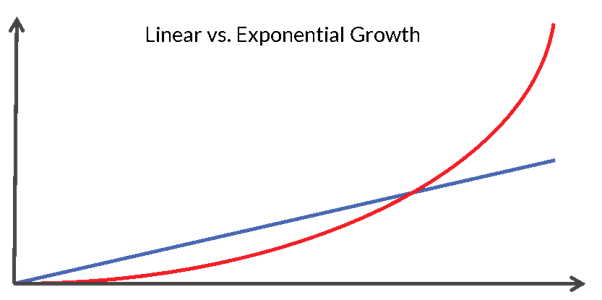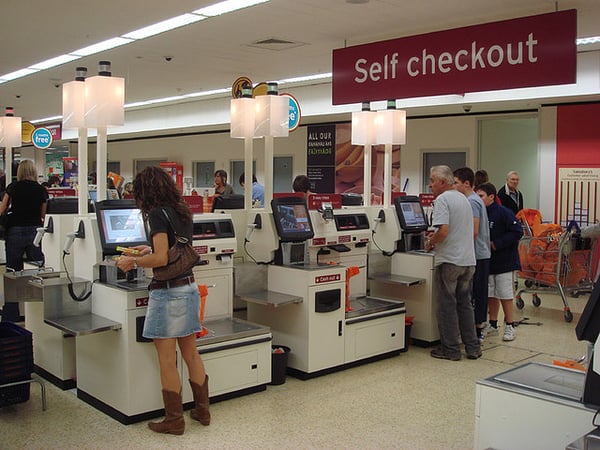Technology is Exponential, Humans are linear.
In this blog we explore linear thinking and compare to exponential growth. So what does that actually mean and how is it relevant to telematics?
Linear growth – slow continuous growth.
Exponential growth – accelerating growth.

If you ask a human to take 30 steps and each step is a metre then the answer is simple – 30 metres.
Now do the same experiment with exponential (the length of step doubles with each stride) and you might be surprised at the answer – 500,000 kilometers or 13 times around the equator of the earth.

For those old enough to remember Kodak it could be argued that they had a linear outlook as the business appeared to be centred on selling hardware. As the growth of mobile electronic devices became exponential they became able to provide everything Kodak could provide on an app without the hardware purchase. As Kodak weren’t agile enough they went bust.

Another example of thinking “out of the box” and not in a linear fashion would be supermarkets. The larger supermarkets have been faced with the challenge of how to compete with the low cost competitors who have grown to be so popular over the past years. One of the more noticeable changes within the larger supermarkets was the move to self-scan devices and check outs. There are now around 20 self-scan bays at each supermarket and the outcome of this has been a significantly reduced labour cost to compete with these low cost retailers. As these are mostly double shifted positions then there has been a saving of around 40 salaries as this automation has been put in place.

So if we now look at this comparison within telematics we can explore the challenges faced within transport including accelerating growth, innovation and productivity.
Challenges, Solutions, Outcomes
| Challenge | Solution | Outcome |
| Basic telematics system | Invest in system that has the growth capabilities required. | Data rich solution providing essential KPI’s for the business. |
| Poor scheduling. | Use an electronic job scheduler | Drag and drop as required and save significant time. |
| Manual job despatch using paper |
Automate all processes. |
Less labour, mileage savings and additional work completed every day. |
| Don’t understand running costs of the vehicles | Let telematics communicate the data directly from the vehicle. | Increased knowledge of fuel consumption, vehicle running costs and increased margin. |
| Competitors are embracing technology | Find the solution that fits your business. | Lower competitive cost base and satisfied customers. |
With regards to telematics there are two types on conversations we are now having with clients or prospects:
Linear:
Do we replace your current black box with our black box?
Exponential:
How do we automate all of your processes through scheduling, job despatch, driver communication and digital paperwork? This approach means the return on investment can be measured in:
- Labour
- Fuel Consumption
- Extra jobs per day (what margin do you achieve in each job)?
Think of the scenario where you are out enjoying a Saturday evening in a restaurant or pub. By using your mobile device you could remotely set your house alarm, turn your central heating on/off and record a TV program you are missing. But in business you still use manual/paper based processes?

Do you see innovation as a threat or an opportunity? Do you want to lead your competitors or follow them? What do you think the consequences would be for an unconnected business?
Next week Part 2 of Linear v Exponential explores Stakeholder responsibilities and puts figures on the Return on Investment that is possible through an automated exponential approach.


